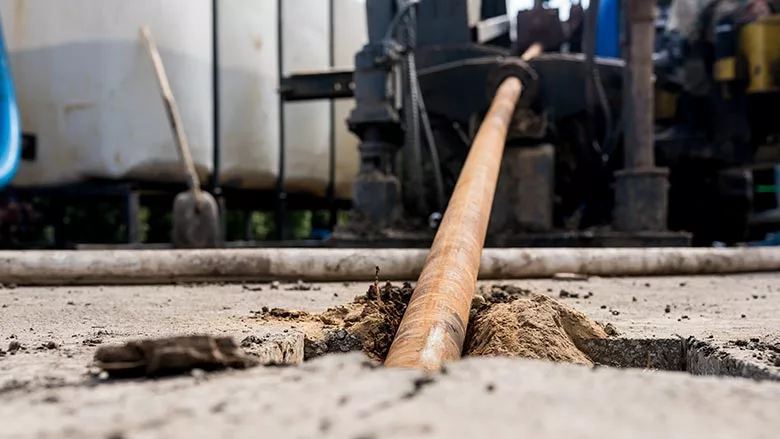Polymer Drilling Fluids for Small-Diameter HDD Bores
Tempted to Drill with Water? Premeasured Mixes Could Help

Bentonite is the go-to for drilling fluids, but sometimes contractors may require or opt for polymers instead.
Source: Getty Images
Typically, for most drilling applications circulating a drilling fluid, we recommend a bentonite-based fluid. Such fluids check all the boxes when it comes to ideal characteristics. There are times, however, when contractors may not want to use bentonite.
For us, it is about matching the right drilling fluid system to the application. This holds true especially for small-diameter, short-distance HDD bores. Crews can reduce mixing and clean-up time using a polymer-based fluid. Often, contractors may just use water in these applications, though experts advise against the use of water only, as it results in accelerated wear on drilling rods and tooling. In addition, the likelihood of inadvertent returns, pipe stretching and getting stuck increase exponentially when using just water. Over time, this will result in lower production rates and certainly higher costs.
The post-pandemic rush to install new fiber, electrical, and gas line networks has increased the popularity of polymer-based systems that typically utilize single-use packages. Below are some of the reasons why these systems are popular with contractors drilling small-diameter, short bores:
- Premeasured products mean a consistent mix every time.
- Employees mixing the mud do not require expertise in drilling fluids chemistry.
- Products mix quickly with little shear, and do not require large tanks.
- Adding these products increases drilling speed and ease of getting your product back (versus using just water).
- Using polymer systems as directed extends tool and rod life. Drilling with water only accelerates wear on tooling.
- Single-use packages take the hassle out of measuring small dosages of liquid or dry products from a large pail.
- Flexibility to use with bentonite drilling mud. The small, premeasured packages may work with standard mud systems based on manufacturer recommendations.
First, evaluate the ground conditions. This will dictate the polymers used to complete the drilling.
Just like bentonite systems, an all-polymer drilling fluid blend may consist of several components. The order in which you add the polymers to the mix tank affects the performance of the whole mix. First, evaluate the ground conditions. This will dictate the polymers used to complete the drilling. Once determined, follow manufacturer instruction as to which products to use and in which order to mix them. Single-use packets or jugs make it quick and easy to dose.
With a boost to infrastructure spending, small-diameter utility drilling projects will continue to increase. This will drive the requirement for easy-to-use fluids like polymer drilling fluid systems. Adding a polymer drilling fluid, versus just pumping water, will increase production rates and reduce downtime, allowing contractors to improve profitability.
Looking for a reprint of this article?
From high-res PDFs to custom plaques, order your copy today!




